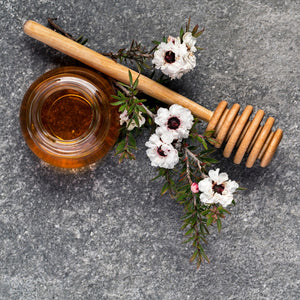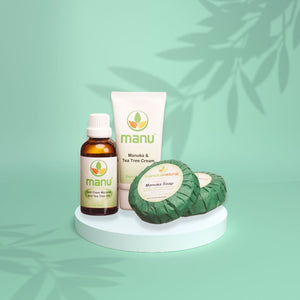
Japanese skincare is an art
The art of Japanese skincare
Don’t you love how Japanese women look? The art of skin care invented by Nihon culture has unique features that make their beauty one of its kind.
Japanese author Naomi Moriyama is the author of the book “Japanese Women Don’t Get Old or Fat.” In it, she reveals the secrets of longevity and eternal youth of Japanese ladies. Women in Japan eat extremely healthy, and Japanese culture dictates small serving portions.
Their diet consists primarily of fish, algae, fruits, soy, rice, vegetables, green tea, and fermented food. Apart from being healthy, all these foods also have an anti-aging effect which is why Japanese women always look young.
Consuming (using) living cosmetics is the art of skin care
Live cosmetic is what we usually call home remedies or organic cosmetics whose composition is 90-95% composed of herbal ingredients or natural live strains of good bacteria.
And fermented products take the concept of live cosmetics to a new level.
The fermentation process is as old as the world. But only now have cosmetic manufacturers decided to apply this method in the beauty service.
Many women in the western world are full of hopes in using living and breathing cosmetics.
But what is the benefit of such living cosmetics? Why is their popularity only growing?
Thanks to sake factories, the Japanese first noticed the connection between the fermentation process and beauty way back in the 1970s.
You see, even today, many manufacturers are making sake in an old fashion way. The process involves spreading tons of rice on a huge table and then adding bacteria to start the fermentation process.
To make this process successful, workers are turning over rice with their hands. They use their arms up to the elbow (as shovels) to flip every part of the spread rice.
At a sake factory (also a fermented alcoholic beverage), people noticed that their hands looked much younger than their faces. The whole secret was in the constant contact of the skin of the hands with the products of fermentation.
The art of skin care rising.
How valuable is live cosmetics from fermentation products?
Let’s remember what fermentation is.
The fermentation process converts sugars into acids, alcohols, or gases (this happens under the influence of beneficial bacteria).
Not to mention that fermented products that our and other nations have used for centuries (sauerkraut, kefir, yogurt and other dairy products, soy sauce, wine, beer, etc.) are known for their health benefits.
This is explained by the fact that the concentration of nutrients in the product increases during fermentation, and the body absorbs them more easily.
Bacterial processing allows natural ingredients to open up with a new side and acquire new properties. What is most interesting about fermented products is that their properties are of higher value than their ‘original cousins.’
The Japanese art of skin care in manuka natural cream
Meet Natto gum.
Natto gum is a traditional Japanese food made from whole soybeans that have been fermented with bacteria Bacillus subtilis. Even to the boys and girls who are consuming it regularly, it reminds them of something from the horror movies.
It is the rawest form of live cosmetics there is.
Nattokinase has powerful effects on your health, including lower heart disease risk, improved sinus health, improved gut health, metabolism, etc.
But, that is not all.
What does natto gum do for skin? Is Natto gum good for the skin?
Natto is most consumed as part of an everyday breakfast in Japan. And it’s been like that for centuries.
Microorganisms in a Natto gum convert raw material into enzymes. When this happens, substances are created that are otherwise difficult or impossible to produce.
Whatever the nasty look, Natto gum has lots of Vitamin E, which helps balance water and oil in skin cells, thus improving overall skin conditions. It also eliminates active oxygen radicals, which can damage skin cells.
If you’re by any chance allergic to soy, don’t worry because that applies to the original form. Allergenic proteins are partially converted into non-allergenic substances by fermentation.
Natural cosmetic raw materials like natto gum often have a broader nourishing effect than synthetic ingredients precisely because of their complex composition.
And like Natto, many herbal ingredients become fully available only through the fermentation process so that bioavailability is improved and they are more accessible for the body to absorb.
Natto skin benefits, you ask?
Fermented natto gum gives your skin hydration. But also:
attractive appearance,
softness,
complexion,
protection, and
helps to reinforce revitalization
But in my honest opinion, its most crucial role is to protect the stratum corneum from destruction.
The stratum corneum is the outer layer of the epidermis and marks the final stage of keratinocyte aging.
Keratinocytes generate cells needed for repair. However, as the cells mature up the epidermis, they slowly lose reproductive potential and undergo programmed destruction – making you look older.
In like manner, the stratum corneum primarily functions as a barrier between the deeper layers of skin and the outside environment, preventing toxins and bacteria from entering the body.
It also keeps moisture from finding the exit into the atmosphere, which keeps the skin hydrated.
In one research, the Stratum corneum was used as a test marker of skin hydration.
The fermented soy group showed enhanced skin hydration on the face and forearm.
Administration of fermented soy reduced the thickness and quantity of stratum corneum present on the face and forearm. These results suggest that fermented soy has a positive effect on skin hydration.
But this paper displayed significant enhancement of hyaluronan (HA), too. It mainly increased hyaluronic acid in a connective tissue area. (1)
THE BEST EXAMPLE OF THE ART OF SKIN CARE

Meet Masako Mizutani, a 50-year-old woman who has won awards for not aging. Yes, it is not a joke.
Of course, she is more exception than a rule. But if you do a little research, you may notice that there are a lot of these exceptions in Japanese culture. And that is not by accident.
Ok, Bill! You’ve got my full attention now. How does Natto work again?
Fermented foods refer to foods that have undergone lactofermentation. This process involves the production of lactic acid from natural bacteria. In addition to this organic acid, fermentation also produces beneficial enzymes, B vitamins, probiotics, and omega-3 fatty acids.
All useful for a youthful appearance.
Recent medical research has revealed that fermented foods have more benefits for human health than their original form, for which the cellular HCA3 receptor is responsible!
A recent study published in the scientific journal PLOS Genetics found that the cellular HCA3 receptor is key to understanding how fermented foods benefit our health.
For their study, Stoibert and her team focused on the biology behind the effects of lactic acid bacteria on human physiology. They suspected that hydroxycarboxylic acid (HCA) receptors were involved somehow. And she was right because these proteins act as “regulators of immune function and energy homeostasis under changing metabolic and dietary conditions.”
Unlike most mammals, which have only two HCA receptors (HCA1 and HCA2), humans and monkeys have three. The third HCA3 receptor can be found not only in the cells of the human immune system but also in the skin.
So by using fermented food in your cosmetics/skincare art, you’re regulating your immune system in a way that it couldn’t be done with regular food/ingredients.
But you’re also making the tendency towards a relatively stable equilibrium of longevity between physiological processes.
Therefore, making your skin in balance.
But, the downside of this is that it doesn’t have the same effect on every skin type.
That is why we introduced more of these living cosmetics in our art of skincare.
Manuka fermented cream
Timeless Beauty – Revitalising Face Cream with Natto gum and manuka honey is saturated with natural acids that gently exfoliate the skin, but it is very effective.
After such an exfoliation, the effectiveness of creams and other moisturizing or nourishing agents will only increase.
And the main miracle is that fermented cosmetics are suitable even for ladies with dry and sensitive skin.
You won’t worry about redness or skin irritation when you use it. This effect is achieved because, in Manuka natural’s fermented cream, aggressive chemicals are replaced by soft plant extracts (avocado oil), and manuka honey, which are naturally extracted without high temperatures in production.
In the end …
With sensitive skin, fermented cosmetics can be a gentle but proven way to prevent skin aging. This is because enzymes stimulate the active production of collagen and antioxidants.
So, it is handy to add this skincare art tool to your beauty routine!
Some brands are developing complete 40+ enzyme-based cosmetic lines.
Suppose you’re not ready to buy a range of samples products right away. In that case, you can start experimenting with fermented face masks, soft lotions, and face essences – branded products that specialize in fermented cosmetics.
Or you can try our Timeless beauty with manuka honey, which is also the art of skin care with a wide range of benefits.
Timeless Beauty – Revitalising Face Cream contains Manuka honey, Nato Gum, and Avocado oil for visible redensification of the skin and reduction of the appearance of wrinkles and fine lines.
ORIGINALLY PUBLISHED on blog.manukanatural.com


